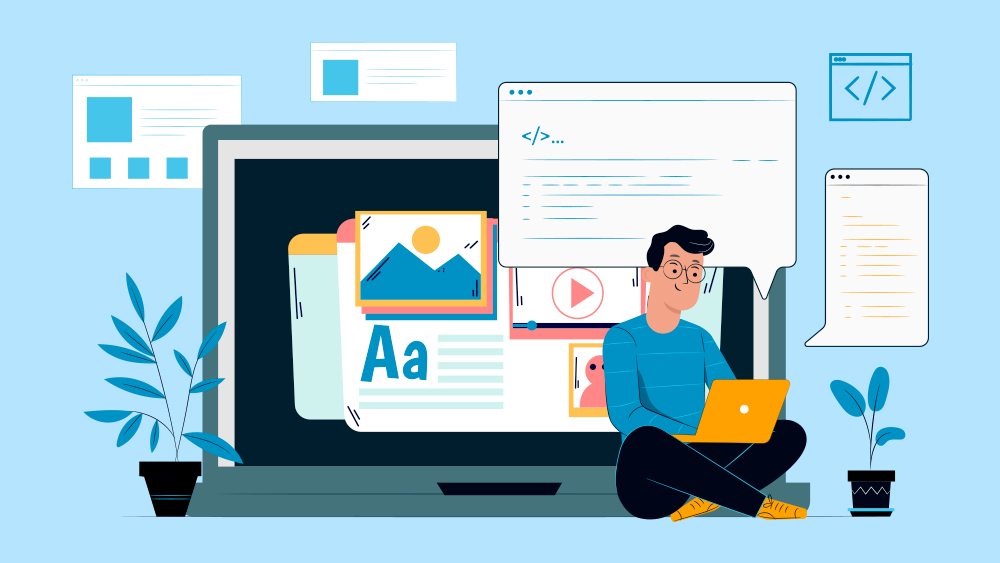It may seem like a specialized topic, but design systems play a critical role in streamlining the design and development process. Centralizing your company’s visual assets in a single, accessible location and enabling faster, more efficient work on any project, design systems are quickly becoming an indispensable part of any team’s workflow. Discover the benefits of incorporating design systems into your design and development process, from improved brand consistency to increased scalability and interoperability. It plays a crucial role in product design, helping maintain consistency and coherence in a product’s overall look and feel. Empower your team to take their design and development to the next level with the power of design systems.
Unlocking The Power Of Design Systems
A design system is a living, ever-evolving set of guidelines to streamlines the design and development process for digital products. It’s a set of guidelines, components, and assets that help your team create consistent, high-quality designs with ease. From defining brand colors and typography, to establishing user interface patterns, a design system provides a foundation for design and development teams to work from. It helps ensure brand consistency across all media, while also promoting scalability, interoperability, and reusability in design. With a design system in place, teams can work faster, smarter, and more efficiently, ultimately delivering better user experiences.
The Significance Of Design Systems
Design systems simplify collaboration across teams. Designing is a team effort requiring diverse skill sets to bring a product to fruition. The design system serves as a go-to reference for the appearance of buttons, headline colors, and chosen fonts. Additionally, it makes it easier for designers to work together. With a tendency to switch between projects and tasks, having a centralized location for all visual assets reduces the time spent searching for them. Design systems also facilitate collaboration between designers and developers, who often have distinct workflows, by allowing designers to create mockups in tools like Figma, and developers to translate these into code in tools like GitHub.
The Benefits Of Implementing A Design System
Design systems streamline collaboration among design teams by providing a centralized reference for visual elements like buttons, font, and color. They also simplify the design process by enabling designers to reuse elements across projects, reducing time spent on creating new designs from scratch. Design systems are regularly updated to incorporate the latest design trends, helping designers stay current and maintain consistency with their team’s work.
Design systems also provide a common language between designers and stakeholders, making communication and collaboration easier. They help establish design guidelines and standards, leading to more consistent and professional-looking products. Furthermore, they save time and resources by streamlining design processes, reducing redundancies and ensuring that designs are scalable and maintainable in the long term. Additionally, design systems can help increase productivity and efficiency, as designers can focus on higher-level design problems instead of constantly recreating basic elements. They also reduce the risk of errors, inconsistencies and misinterpretations in the design process. Lastly, design systems help maintain brand consistency and integrity across all design outputs, which is crucial for building a strong brand identity.
Benefits Of Design Systems For Developers
A design system offers numerous benefits for developers, including streamlining the development process, improving the consistency and quality of the product, and reducing the need for constant revisiting and adjusting of designs. Additionally, with a design system in place, developers have a clear and standardized set of guidelines to follow, reducing the need for guesswork and minimizing the likelihood of errors. This leads to increased efficiency and productivity, freeing up more time for the developers to focus on other tasks. Furthermore, the design system can provide a centralized location for design assets, reducing the time spent searching for the right design element. Lastly, a well-designed design system enables seamless collaboration between developers and designers, helping to ensure that the final product meets the desired design standards.
Benefits Of Design Systems For Product Managers
Product managers use their product’s design system as a reference for how their product should look and feel. Design systems are a single location where you can store every visual asset related to your product’s color schemes, fonts, buttons, and icons. This makes it easy for product managers to reference the design system when they need to make changes to the product. Design systems also make it easier to onboard new hires. New hires can quickly get up to speed by looking at the design system to see what the product looks like. This makes it easier to jump right into the work at hand rather than having to spend time trying to learn the design language of your product.
Design systems are an essential part of the design and development process. They help designers create consistent visual assets, make it easier for developers to collaborate with them, and make it easier for product managers to make changes to the product. If you’re just getting started with design systems, don’t be intimidated. They’re a great way to streamline your team’s workflows and make the design more efficient. With our team of dedicated professionals at Caveman Studios, you’ll have more success with your design systems than ever before! We understand what it takes: creativity in design coupled with high-quality content; excellent user experience so that potential clients don’t leave your site after just one visit! Get started with making the perfect design for your clients with us!

